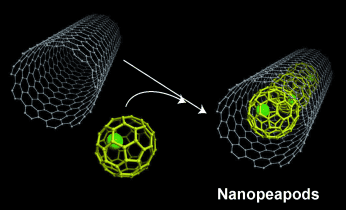Note: The structure and electronic properties of empty single-walled nanotubes (SWNT) and SWNTs filled with fullerene molecules (nano peapods) are also called. The characteristics of this type of metal SWCNT nanotubes are unique and are assigned with metal electrodes or lead superconductors.
Nano peapods are carbon nanotubes that surround fullerene molecules, they can provide advanced performance in terms of empty CNT nanotubes. Their applications include, for example, data storage devices, single-electron transistors, and spin-qubit arrays for quantum computing. Nanotubes are trapped by fullerenes, preventing peapods from reaching their full potential in nanoscale electronics applications.
Conclusion :
With a nano-electromechanical connection between the electronic and quantitative modes of the CNT carbon nanotubes and the mechanical vibrations of the fullerenes. Peapod is a carbonnanomaterial hybrid material consisting of a sphere. Fullerin enclosed in a CNT carbon nanotube . Because of their similarity to the seeds of the plant is named pea plant. Because the properties of carbon rocks differ from those of nanotubes and fullers, the carbon peapod can be identified as a new type of self-assembled graphic structure.
Researcher and author: Dr. ( Afshin Rashid)
PhD in Nano-Microelectronics




